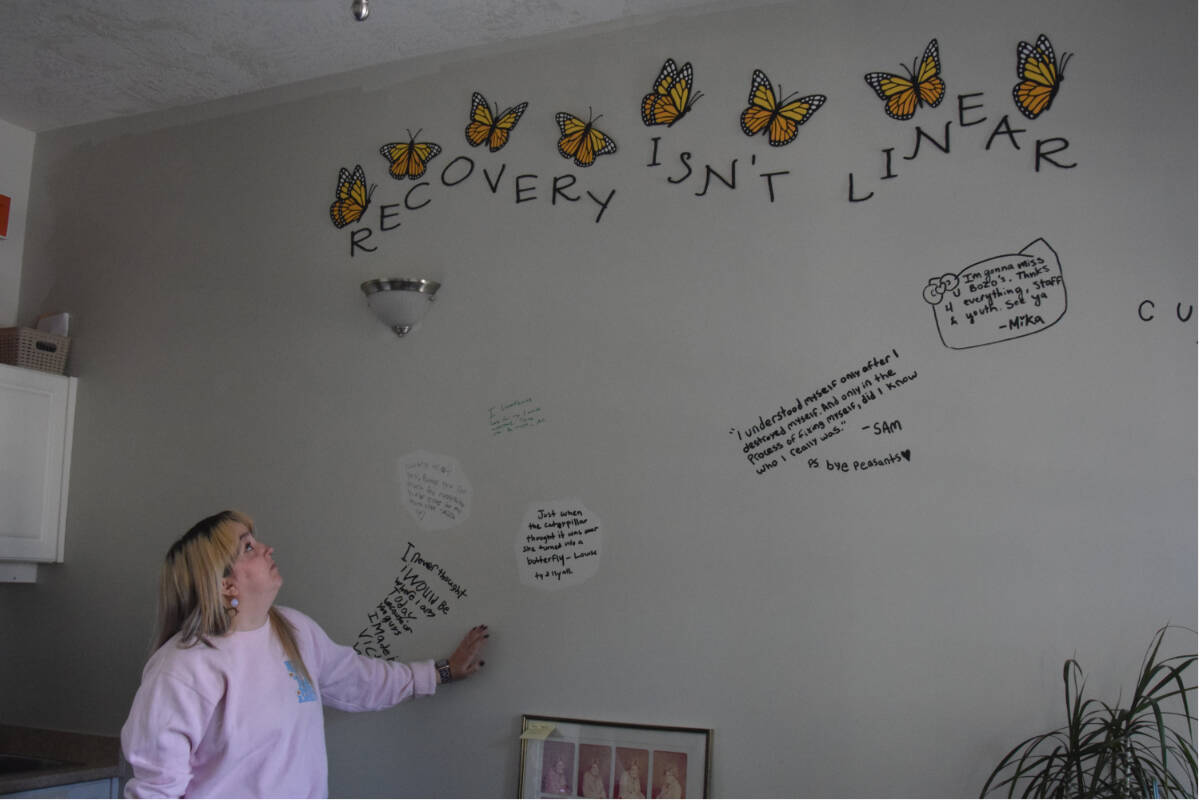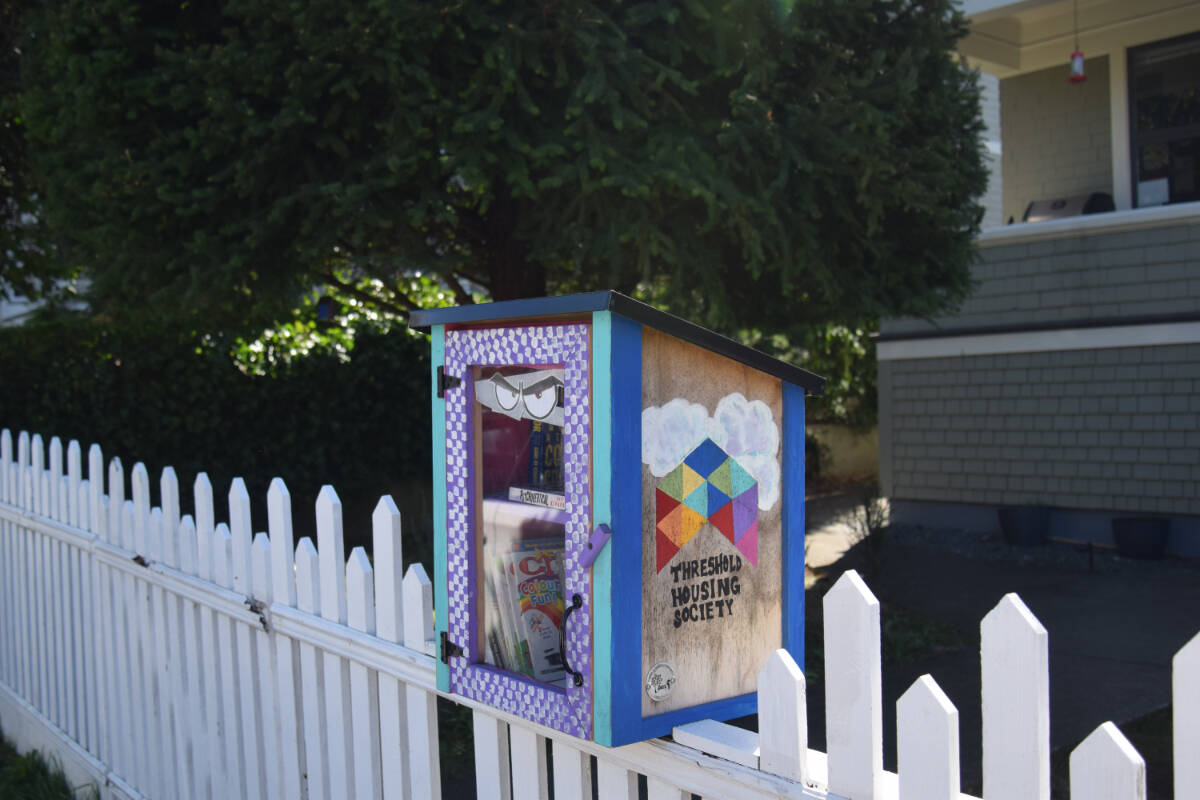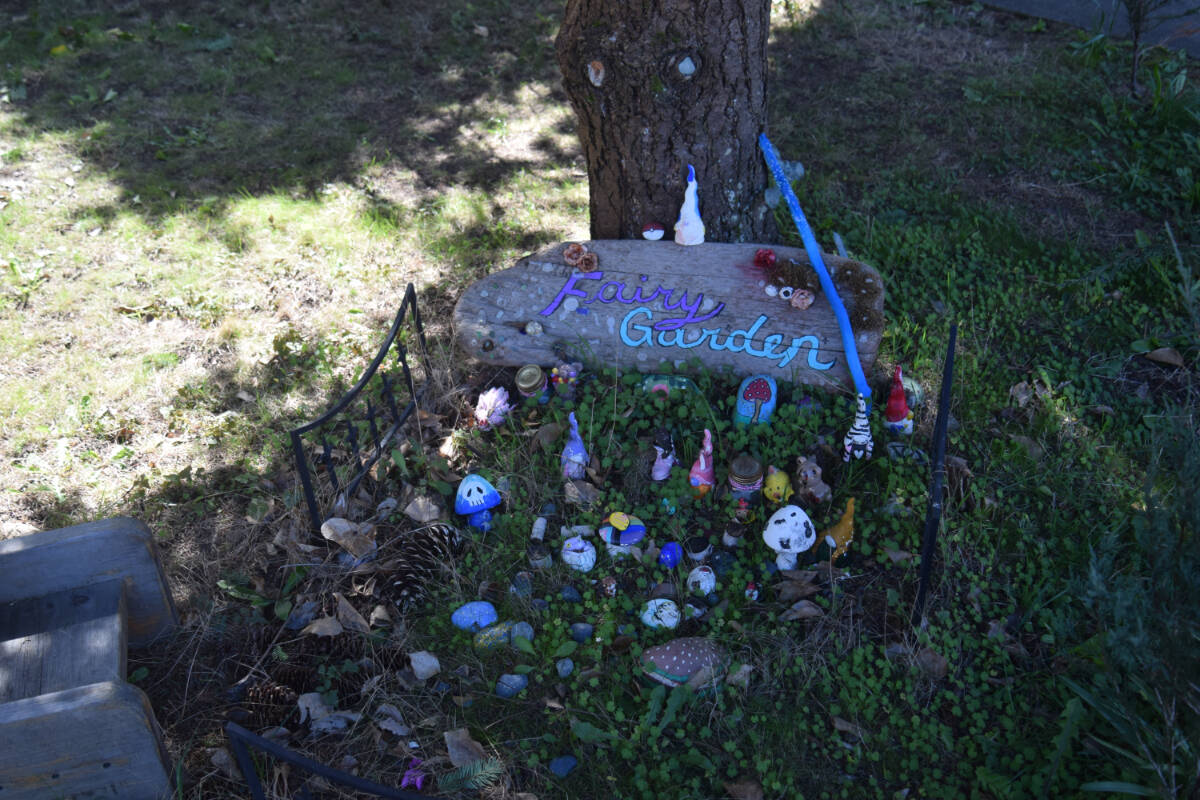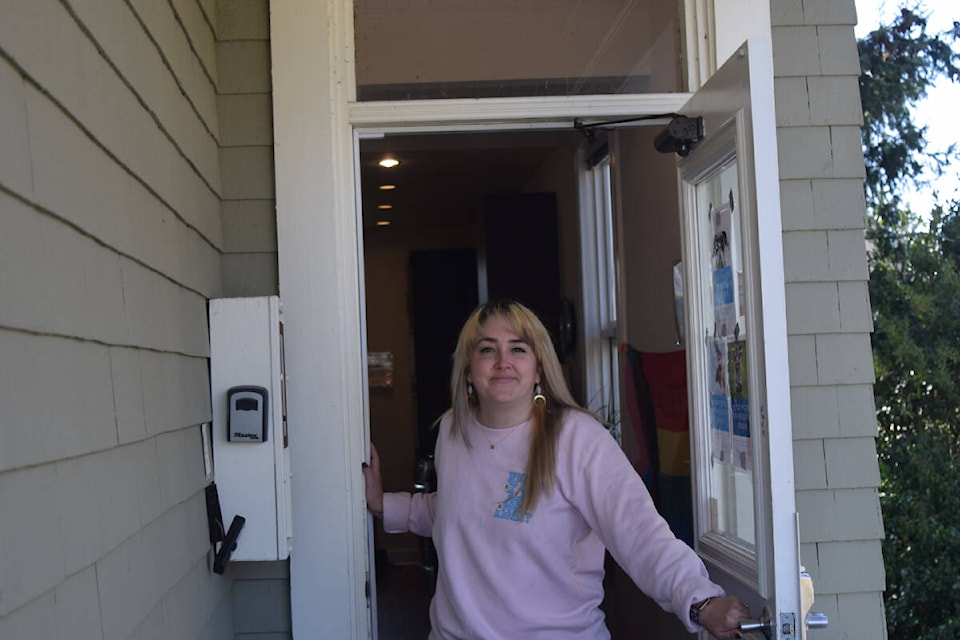In an unassuming character house on a quiet street nestled in the heart of James Bay, magic is happening at the Threshold Housing Society’s youth recovery program.
Inside the eight-bedroom home, people aged 15 to 25 are working to become the best version of themselves through therapy and education focused on harm reduction strategies and life skills, all aimed at keeping them alive while building them up for the road to recovery.
That’s the goal – to keep young people alive as they learn how to navigate life and substance use in an increasingly dangerous landscape, said Kacie Stirrett, manager of Threshold’s supportive recovery program.
“There is a significant focus on adult services, but with youth there isn’t as much focus as I think there needs to be,” Stirrett said. “There is this perspective that before the age of 19, no one uses substances, but as soon as they turn 19, they’re going to need those services. I think the earlier an intervention or support service that you can provide to somebody, the better success rate.”
Threshold Housing Society is a housing-first organization, focused on providing unhoused youth with a place to live, but Stirrett said many of the youth interacting with the organization also face some sort of drug use.

With kids from a variety of backgrounds, educational levels and economic standings, the program also requires a range of approaches.
“We have youth who are working into university and we have youth that have not pursued or had access to education and so something that our program does well is we try and offer a multitude of different learning styles, whether that is spoken or written, one-to-one, group, art therapy,” Stirrett said. “We’re just trying to find as many ways to connect with these youth as possible because we recognize there is a range of learning abilities.”
There are a variety of reasons youth drug use is treated differently from adult drug use. Stigma, for one, impacts drug users of all ages, but Angela McNulty-Buell, the director of housing and support services at Threshold, said it has a significant effect on youth.
“There is a real taboo in having a real conversation about how you can support youth to safely use substances,” McNulty-Buell said. “That is really triggering for a lot of folks, because none of us want youth to use and we can all be on the same page as that, but it is not real.”

School surveys have found that 60 per cent of Grade 7 to 9 students in Canada reported substance use and the number of people under 19 dying from toxic drugs has increased from five in 2012 to 34 in 2022, according to the BC Coroners Service.
The silencing effect that comes from avoiding those conversations, Stirrett said, results in shame, which prompts people who use drugs to do so alone – increasing the chances of overdosing.
“We need to have the conversations that substance use is not inherently bad, that good people use drugs and those people need love and care just like the rest of us,” Stirrett said. “The more willing we are to have those conversations, I think a safer community we will have.”
That’s why everything is a conversation at Threshold.
The first conversation they have with youth entering the four-month program is about what recovery looks like for them – whether that’s abstinence, using cannabis as a harm reduction tool or engaging in safe use practises to either use less or use more safely.
Detoxing can be a significant barrier for youth, so it is not a mandate for the program. A stability period is preferred, but Stirrett said abstinence from all substances is not the only form of recovery.
“A lot of the time, the youth coming into our programs just don’t have those coping skills. They haven’t had a role model who was able to model emotional regulation and things like that,” Stirrett said. “So often times, we will support use of cannabis or tobacco as a form of harm reduction while we’re also on-boarding other strategies.”
Youth may come into the program needing to use 30 times a day – with each urge prompting a conversation about why those feelings are there, how to handle them and if that can happen without the drug. Slowly, though, Stirrett said that she’s seen that number go to 10 times a day, and then three, and then zero, as the coping skills build up and youth in the program grow more resilient.
Encouraging youth who use drugs to be honest, open and vulnerable is one way Threshold reaches success, but that has to go both ways for it to work well.
“I think we create safety when we hold space and when we are open-minded,” McNulty-Buell said. “So as a parent of teenagers myself and as somebody who has been doing this work for a long time, I find myself really saying less and listening more and checking my judgment and my preconceived notions about what should youth in our community be doing.”
The evidence of the power of the program is all over the house.
From a wall with messages written by those who have moved on, to homemade art and poetry, it is clear the conversations happening in the home are working. Walking through the house feels like walking through a home, where a little white dog in a tie-dye shirt runs to greet you and there is a fairy garden in the yard.

“Youth really make it their own. They have their own private bedrooms and bathrooms, but we have a shared living room and kitchen, we’re staffed 24/7 and so there is always someone on shift that can support youth through whatever they’re doing,”
Many of the youth Stirrett has seen through the program have gone on to finish their education or secure jobs, while effectively balancing their triggers and protecting their health.
“The youth that are coming through are really impressive kids,” she said. “They are really achieving the goals they set out to do, whether they’re work, school, relational – they’re just doing really cool things.”
The care provided here is life-changing and at the end of the program, many transition into the housing supports Threshold offers, only strengthening the work done and supporting the work to come. That continuity of care is what sets Threshold’s program apart and contributes to the longevity of success in moderating drug use for the kids who go through the program.
“If our youth don’t have a safe place to go after the program, I’m not going to discharge them back to homelessness,” Stirrett said. “If they’re still working on the program, they’re still doing the steps, then I want them here. A lot of our youth from our supportive recovery program are able to transition onto our housing program which will then support youth up until they’re 25, until basically their 26th birthday. So we are really sending them on a really supported trajectory into their early adult life.”
Improving the addiction care system in the long term is, in part, dependant on resources like Threshold’s recovery program, Stirrett said, which set out to identify and treat substance abuse early on.
The wait-lists for detox beds in the adult sector are long, and getting continuous treatment can be arduous and expensive, which is why McNulty-Buell said they need to work to get ahead of substance abuse, not ignore it.
“We’re really uncomfortable having these conversations around youth being homeless and around youth being addicted to substances – it’s shameful, so as a society and community we don’t want to talk about it, but we need to,” she said. “We’re doomed to fail if we don’t stop the influx of people into the adult system. We are just going to continue to be backlogged, to be over-burdened and we’re doomed to fail.”



